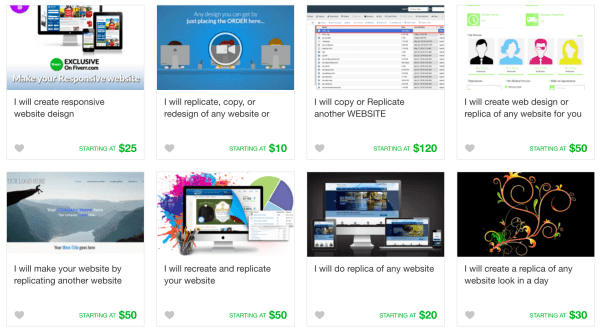6 Content Marketing Lessons From Fake News
84% of Americans think they know the difference between fake news and real news. They’re wrong. A Buzzfeed survey found that 75% of Americans have been fooled.
We may be on the lookout but fake news still penetrates our hardened Internet attention defenses. This is an unmitigated disaster for media producers and consumers, but a gold mine for marketers, especially those who hold content near and dear.
Fake News’s impact is proof that in an oversaturated world, creators with even low-quality content can get their message into the New York Times…or convince the free world’s mediathat WhatsApp has been hacked.
Here’s the things. Google algorithms are winning the war on black-hat SEO’ers.
Now it has to deal with black-hat content creators.
And, of course, this is going to be even harder with more AI content competing with our content.
This information dissemination meltdown brings with it a real education for content marketers.
Here are six marketing lessons that Fake News drives home. But please, use these insights for good, not evil.
#1 Lead Right
Social media is jet fuel for fake news rocket ships. 60% of all shared links are never clicked (even by the people who shared them). Headlines are about micro-content consumption, dictating article success on the merit of 6-10 words.
Balkan teens churning out alternative facts spend their time grabbing other articles, true or false, and writing sensationalized headlines. Which can work for even amateurs; Upworthy built a content empire by rewriting and A/B testing headlines but two of their most explosive articles ever had the headlines written by interns.
White-Hat Content Lesson: Content matters. But the micro-content you lead with – headlines, open-graph info and metadata – are your content’s calling card.
#2 Inherited Credibility
Web design is converging.
Think of the ubiquitous startup video with a video background, transparent menu with outlined call-to-action button. News sites are no different, creating baseline standards that set expectations and associations. Look at a fake news website. It feels real. We know anyone can rip off a design to inherit credibility from an existing schema…but it’s still effective.

Oh, Upwork, look what you've done.
How easy is it to replicate a serious website? $20 easy, according to Fiverr
White-Hat Content Lesson: Shake the boat if you feel like you can take it…but form matters. If you’re writing content that wants to be taken seriously, check out how other serious folk are packaging the content.
#3 The World Revolves On Social Proof
Content credibility goes through the roof with “real” names and pictures. The New York Times’ expose on Cameron Harris, a busted Fake News author, dives into how he invented a source.
“A photograph, he thought, would help erase doubts about his yarn.”
It did. And it sent a story about fraudulent Clinton votes went ballistic.
Kernel of apparent truth, a good story, some fake social prof, and you’re good to go. Which is why other fake news sites even use false attributions to real people.
White-Hat Content Lesson: : Get real people to talk and use pictures or videos as force multipliers for testimonials, interviews, and case studies.
#4 Repetition (Even of Lies) Get To Us.
Let’s say you read something fishy. You keep on reading, getting a little more skeptical as you go (Cinnamon Roll Can Explodes Inside Man’s Butt During Shoplifting Incident?! ). Even when you know it’s a lie, it still impacts you. Stanford research showed that when students are taught something, told it was a lie, and then asked again, their answers sway towards the outright lie.
White Hat Content Lesson : Repetition is an incredibly potent tool for communicating a message. This is from Franklin Roosevelt’s post-Pearl Harbor speech:
Yesterday the Japanese Government also launched an attack against Malaya.
Last night Japanese forces attacked Hong Kong.
Last night Japanese forces attacked Guam.
Last night Japanese forces attacked the Philippine Islands.
Last night the Japanese attacked Wake Island.
And this morning the Japanese attacked Midway Island.
#5 Turning Audiences Into Distributers
The Macedonian content farms couldn’t care less about Trump or Clinton politics (although they probably do enjoy Alec Baldwin’s SNL impersonation).
So why so many Trump articles? They found that Trump supporters were 4X as likely to share stories than Clinton supporters. By seeding the right content on Facebook, their stories spread around the world…and advertising cash flew into their bank accounts.
White Hat Content Lesson : Find out how and where your audience shares information and create the tools that empower sharing there. Your audience has the potential to be the best distribution force multiplier.
#6 Confirmation Bias
We love when we’re right and will go pretty far to prove it.
Give someone a problem, get the answer, and ask if they want to change it. Only 15% will. But when people are given their own answer and told it was someone else’s answer , suddenly 60% will change it.
We think that our opinion, by virtue of being our opinion, is right.
Confirmation bias show how bad we are at assessing facts that don’t jive with our narrative. Successful Fake News stories played into what readers wanted to hear, triggered, triggering that “I knew it!” reaction.
White Hat Content Lesson : Make your reader your hero. Give them the “ I knew it ” moments but also deliver the “ aha ” moments as well. Resonating on an emotional level is critical for good storytelling. And good storytelling is critical for great content.
The Bottom Line
Fake news isn’t going anywhere.
Let’s use our incredible content – together with brilliant distribution and writing – to make their life a little harder.